Suppose I have to estimate coefficients a,b in regression:
y=a*x+b*z+c
I know in advance that y is always in range y>=0 and y<=x, but regression model produces sometimes y outside of this range.
Sample data:
mydata<-data.frame(y=c(0,1,3,4,9,11),x=c(1,3,4,7,10,11),z=c(1,1,1,9,6,7))
round(predict(lm(y~x+z,data=mydata)),2)
1 2 3 4 5 6
-0.87 1.79 3.12 4.30 9.34 10.32
First predicted value is <0.
I tried model without intercept: all predictions are >0, but third prediction of y is >x (4.03>3)
round(predict(lm(y~x+z-1,data=mydata)),2)
1 2 3 4 5 6
0.76 2.94 4.03 4.67 8.92 9.68
I also considered to model proportion y/x instead of y:
mydata$y2x<-mydata$y/mydata$x
round(predict(lm(y2x~x+z,data=mydata)),2)
1 2 3 4 5 6
0.15 0.39 0.50 0.49 0.97 1.04
round(predict(lm(y2x~x+z-1,data=mydata)),2)
1 2 3 4 5 6
0.08 0.33 0.46 0.47 0.99 1.07
But now sixth prediction is >1, but proportion should be in range [0,1].
I also tried to apply method where glm is used with offset option: Regression for a Rate variable in R
and
http://en.wikipedia.org/wiki/Poisson_regression#.22Exposure.22_and_offset
but this was not successfull.
Please note, in my data dependent variable: proportion y/x is both zero-inflated and one-inflated. Any idea, what is suitable approach to build a model in R ('glm','lm')?

